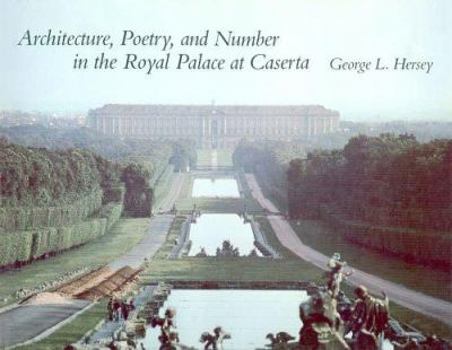Architecture, Poetry, and Number in the Royal Palace at Caserta
The great palace of Caserta, near Naples, probably the largest building erected in Europe in the eighteenth century, became an archetypal expression of absolute monarchy. It was begun in 1752 for Carlo di Borbone, King of the Two Sicilies, who worked closely with its chief architect, Luigi Vanvitelli. Although Vanvitelli was one of the most notable architects of his century, as Caserta was one of its major buildings, this study by a leading scholar of Baroque and Neapolitan architecture is the first book in English on the architect and his masterpiece. The book offers a new view of the palatial and megapalatial in architecture. Although the monarch for whom it was built never spent a night under its roof, Caserta was designed to provide the royal family and the court with a grand residence and more. It was also intended to house the offices of the government bureaucracy, barracks, a national library, a university, and a national theater - not only to symbolize but to contain the organs of a large modern state. Caserta influenced much that came after: plans by Boull?e for a new Versailles to return pride of size to France, buildings in both Imperial and Soviet Russia, palaces of the later British Empire, even the Pentagon. As Hersey notes, "if Carlo di Borbone could return from the grave and rule the United States, he would move the seat of executive power from the White House to the Pentagon." The book also provides intriguing insights into the relationships between poetry - painted and sculptured allegories - and number - architectural planning that has become a geometrical game. It sketches the intellectual background of Carlo's conception, emphasizing the king's mythical forebears and his love of mathematical order. It shows that the Neapolitan poet and philosopher, Giambattista Vico, influenced the king to incorporate such mythic figures as Hercules and Aeneas into his genealogy and Vanvitelli to introduce their likenesses into Caserta's art, which is in turn integrated with the geometry of the palace's gardens and the numerical sequences of its rooms. George L. Hersey is Professor of Art History at Yale.
Format:Hardcover
Language:English
ISBN:0262081210
ISBN13:9780262081214
Release Date:May 1983
Publisher:MIT Press (MA)
Length:318 Pages
Weight:3.20 lbs.
Dimensions:0.9" x 10.4" x 8.4"
Related Subjects
ArchitectureCustomer Reviews
0 rating





